On February 1, 2013, Hiroshima University established two new programs: the “Distinguished Professors” (DP) program and the “Distinguished Researchers” (DR) program. Individuals who are part of these programs are recognized as senior and junior faculty members respectively, who are engaged in extraordinarily distinguished research activities.
A Conversation with Distinguished Researcher Nao Tsunoji
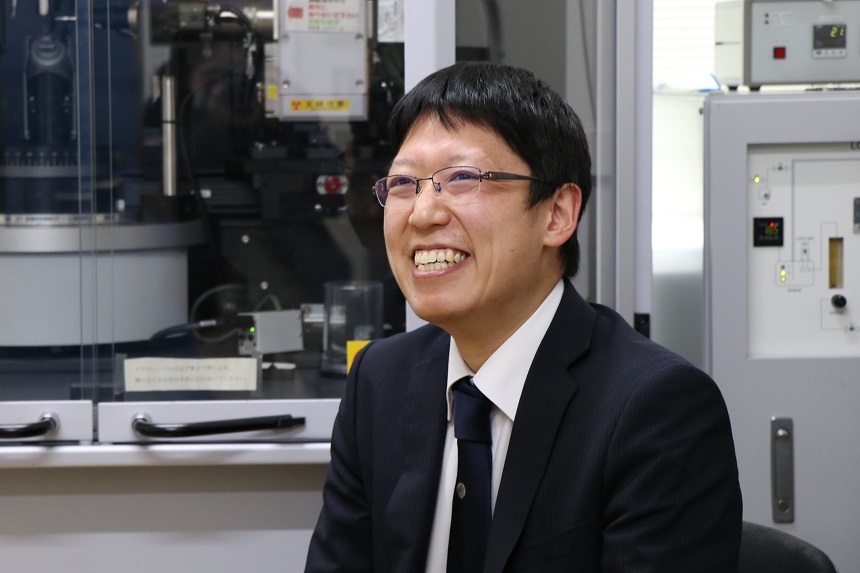
Please tell us about your field of specialty.
I specialize in the field of material synthesis, with a focus on the design synthesis of porous materials, such as zeolites, mesoporous silica, and layered silicates. These materials have many practical uses as catalysts and for separation and adsorption applications, which are important in CO2 recycling and environmental treatment processes.
What is your educational and research background?
My Master’s thesis was on the synthesis of a novel type of layered silicate material, named the Hiroshima University Silicate (or “‘HUS”’). I tried to synthesize other new layered silicate materials by changing the synthesis parameters over and over. By the end of my Master’s course, I had found two HUSs with a novel crystal structure. These new materials were my motivation to get into a Ph.D. course, as I wanted to further investigate them and find practical applications for them.
Could you explain your research field in more detail?
I mainly focus on the synthesis of catalytic and adsorption materials. Zeolites—porous aluminosilicates containing pores whose size is in the molecular order—are a particularly useful family of materials in industrial settings. However, it is very difficult to rationally determine the appropriate synthesis conditions to obtain zeolites with a desired functionality. Thus, my work focuses on the design synthesis of zeolites by investigating their characteristics and properties, such as their crystallization mechanisms. More recently, by leveraging the fundamental findings of my research on design synthesis, I have been investigating the application of porous materials to address the challenges of CO2 recycling and environmental treatment.
What is especially difficult about working with zeolites for such energy and environmental-related applications?
The biggest problem with functional zeolites is the difficulty of their synthesis. The fabrication of these materials involves hydrothermal treatment, which in turn involves high pressure and temperature. As the hydrothermal reactor is a closed system, it is very difficult to do anything mid-way during the synthesis process. Thus, controlling the intermediate species directly to get the desired functions out of zeolite is much harder compared to organic synthesis processes.
How are you and you colleagues trying to overcome these challenges?
We tackle these issues by investigating the formation of zeolites at the molecular level using tools such as mass spectroscopy and solid-state nuclear magnetic resonance. I have also developed a novel synthesis strategy that involves using specific starting materials and templates to purposefully control the synthesis process.
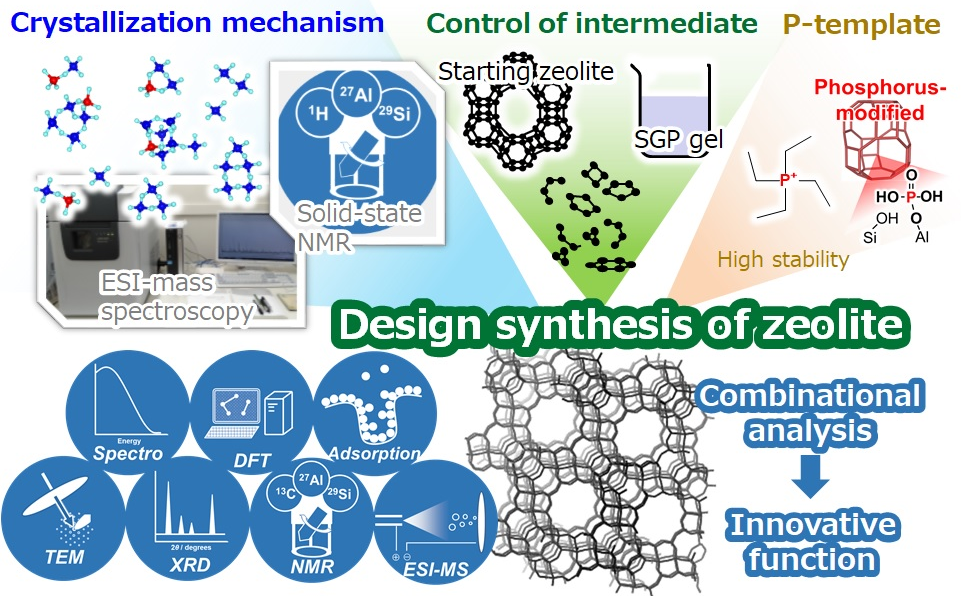
The synthesis of zeolites for specific purposes is challenging and involves a lot of fundamental research, which is made possible through an assortment of analytical tools as well as practical and theoretical approaches.
Could you tell us about the major ongoing projects you are working on?
Right now, I am working on two New Energy and Industrial Technology Development Organization (NEDO) projects. In the first project, we are collaborating with AICE, a research consortium of Japanese automobile companies, to develop an exhaust gas purification system for hybrid cars. The second project, which is a collaboration with Kochi University and Chugoku Electric Power, is about CO2 recycling. The idea is to develop a bi-functional material capable of both capturing and converting CO2 into other compounds, simultaneously reducing greenhouse gas emissions and yielding useful chemicals. Such a material will help reduce the total energy cost of CO2 capture and conversion and pave the way to our goal of net-zero emissions by 2050.
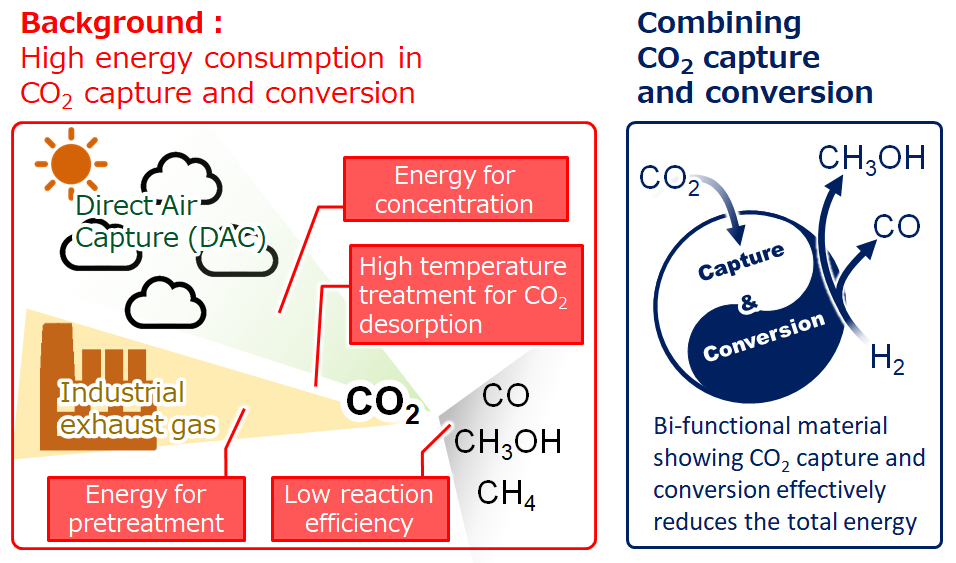
Current technologies for the recycling of CO2 are hindered by their high energy consumption and low efficiency. Developing a material that can help both capture and convert CO2 would help greatly reduce the total energy costs.
How will the completion of these projects impact society?
Both of these projects focus on improving societal sustainability by effectively using and recycling carbon from different sources. They will help address environmental concerns regarding the greenhouse effect and the accelerating depletion of Earth’s resources.
What are some things about your research that you are proud of?
I am particularly proud of our lab and the tools we have for the synthesis of zeolites. We have many hydrothermal reactors and analysis equipment, as well as sophisticated tools for investigating the formation pathways of zeolite, which are quite important for my research .
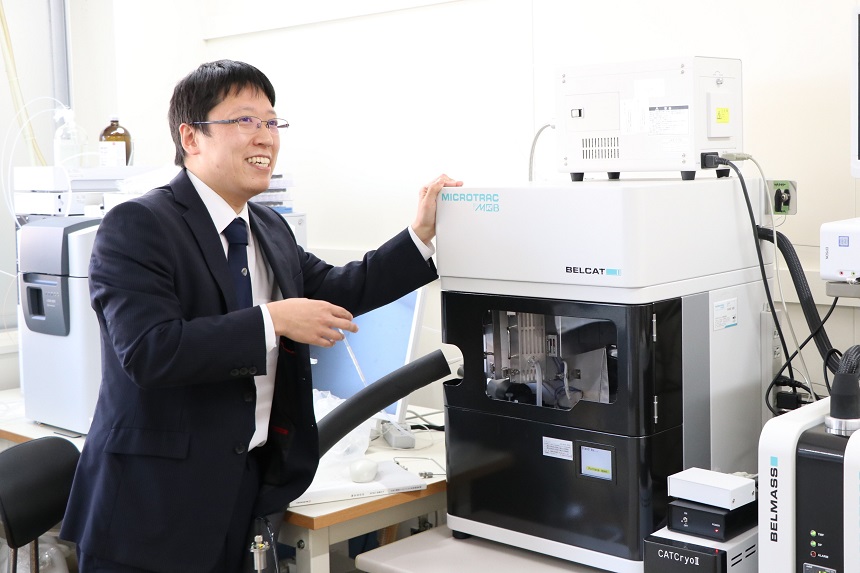
Are there any new research themes that you are interested in exploring in the future?
Honestly, I think I am still searching for my career-long research theme. There are many, many energy- and resource-related problems in the world, and I think interdisciplinary research and communication between researchers will be key to achieve new solutions.
What are some things you enjoy outside of work?
I am married and have children; so, personally, I enjoy taking care after my family and helping with daily tasks, such as cooking and going to the market, and also going to the park with my kids.
Do you have any message for young students or researchers?
I think many Japanese students feel that going for a Ph.D. is very difficult. I usually tell Bachelor’s and Master’s students that, if they want to investigate or create something interesting, they should go for a Ph.D. This is because students in Master’s and Bachelor’s courses usually get their topic of research selected by their supervisor. However, in a Doctoral course, they have a higher degree of tunability regarding the theme of their research.
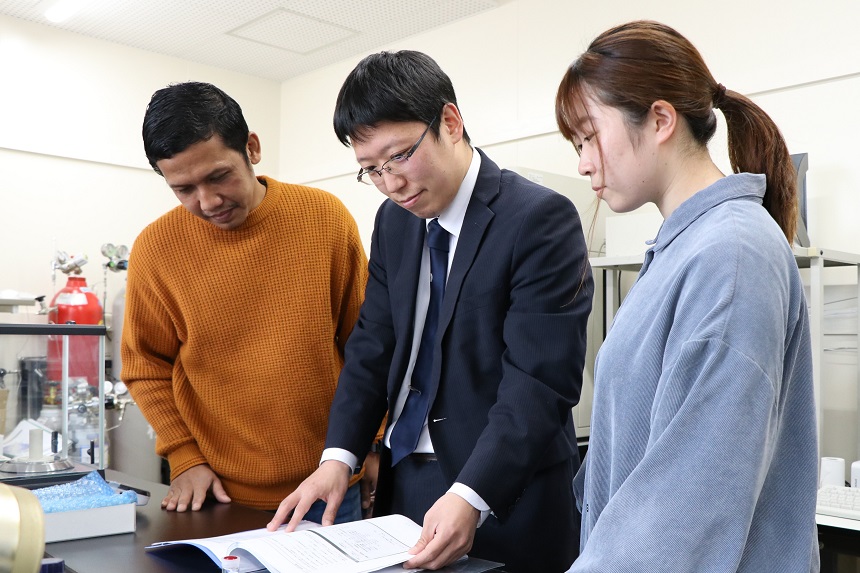

 Home
Home